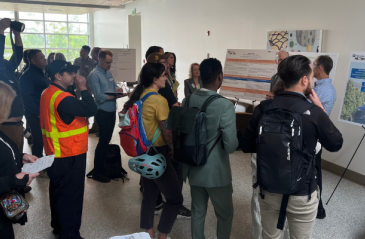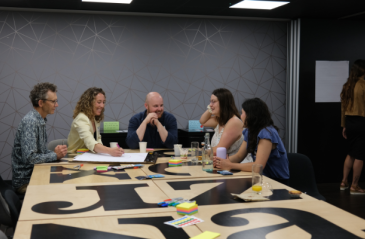
The information barriers holding back climate action and how to break them

Government support services can help rescue new borns' life chances
Share articleNew Zealand’s Centre for Social Data Analytics helps apply strong data science to govt data
Share articleTechnology needs to reach ordinary people's everyday problems, not just professionals
Share articleWe put our vision for government into practice through learning partner projects that align with our values and help reimagine government so that it works for everyone.
“If you ever talk to a youth court judge, they say that it can be obvious from the moment a child is born that they are likely to appear in front of them one day.”
Rhema Vaithianathan is not one for hyperbole but hers is a powerful point. Sometimes, the agglomeration of risk factors means that a newborn baby faces huge challenges and vulnerability - and that's when government support services become critical to rescuing their life chances. Unfortunately, that doesn't always happen.
“Government agencies possess huge amounts of data across different sectors that can tell a vivid story about the circumstances a child is born into, yet very often support services aren't activated until there is a bad outcome.”
Thankfully, technological advances mean that it doesn't have to be this way.
As co-director of New Zealand's Centre for Social Data Analytics at AUT University, Auckland, Vaithianathan helps apply strong data science to linked data - the information held by different government agencies and departments - by helping join the dots to enable the true picture to emerge. Valuable insights can then be drawn in order to measure the impact of social interventions, identify the need for new policy and predict the likely outcomes for individuals and groups in society.
“Thanks to improvements in computing power, we know that we can link all these data sets together in real time, and develop ‘linked administrative data' - which is data collected from individual family members coming into contact with government agencies,” she explains. “This data used to sit in individual repositories in agencies across the country - city, county and central government level - but we can now use this information to build a more complete picture of family circumstances.”
At the Centre, the focus is on linked data that can tell stories about healthcare, child welfare, education and justice. To do so, its team produces a predictive risk model, an automated tool which generates a risk score for the occurrence of an adverse event through the use of algorithms and large administrative data sets. This can then help identify opportunities for social intervention and improve individual and community outcomes.
“Without the algorithms, the data sets are just overwhelming,” explains Vaithianathan. “Social workers and other frontline workers cannot mine all this data in any structured fashion. They might pick up little bits here and there, but it's difficult for them to consider every child and adult in in a household and go back and analyse all the various factors that make up the administrative data set. So this is where an algorithm or statistical model comes in - it looks at the factors, pulls them together and provides a summary statistic based on previous patterns of factors that have proven to be important.”
Vaithianathan is keen to stress that analytics and algorithms are not here to replace the vital work of frontline workers - anything but. Instead, they should be seen as a potent new tool for helping them to improve the lives and life chances of some of the most vulnerable people in society - from newborn babies upwards. “Social workers, for example, have to go in with a set of questions for the family and from that they have to draw conclusions about how they can help,” she points out.
“They may well be young and inexperienced, and are faced with situations that can be high-speed and unstable. They are trying to find answers to difficult questions and often there may be no visible issues but, if you look at the data, you can find out a more complete picture. It is a very difficult task to find out in a short period of time these deep-rooted factors, but administrative data really can help uncover the full life story.”
Vaithianathan is equally clear that this is an idea whose time has come. The way agencies respond to allegations of harm has changed little in years and the rates for abuse-related deaths, for example, have remained stubbornly high. “My point is that if humankind can develop new technology then surely the technology should be deployed in those areas where we haven't made as much progress as we would like,” she says. “If you do what you did last year then you'll get the same results you got last year. So, hopefully it will be a set of very useful technologies.”
Vaithianathan points out, however, that the real impact will come not from technology but from changing frontline practice. “The only way that technologies can change the outcome for children is if it changes which children are receiving the services or changes the service they receive,” she says. “History is full of technologies collecting dust without having affected frontline practice. Technology needs to reach ordinary people and everyday problems, not just professionals pursuing frontline innovative work - that's the key test for me.”











